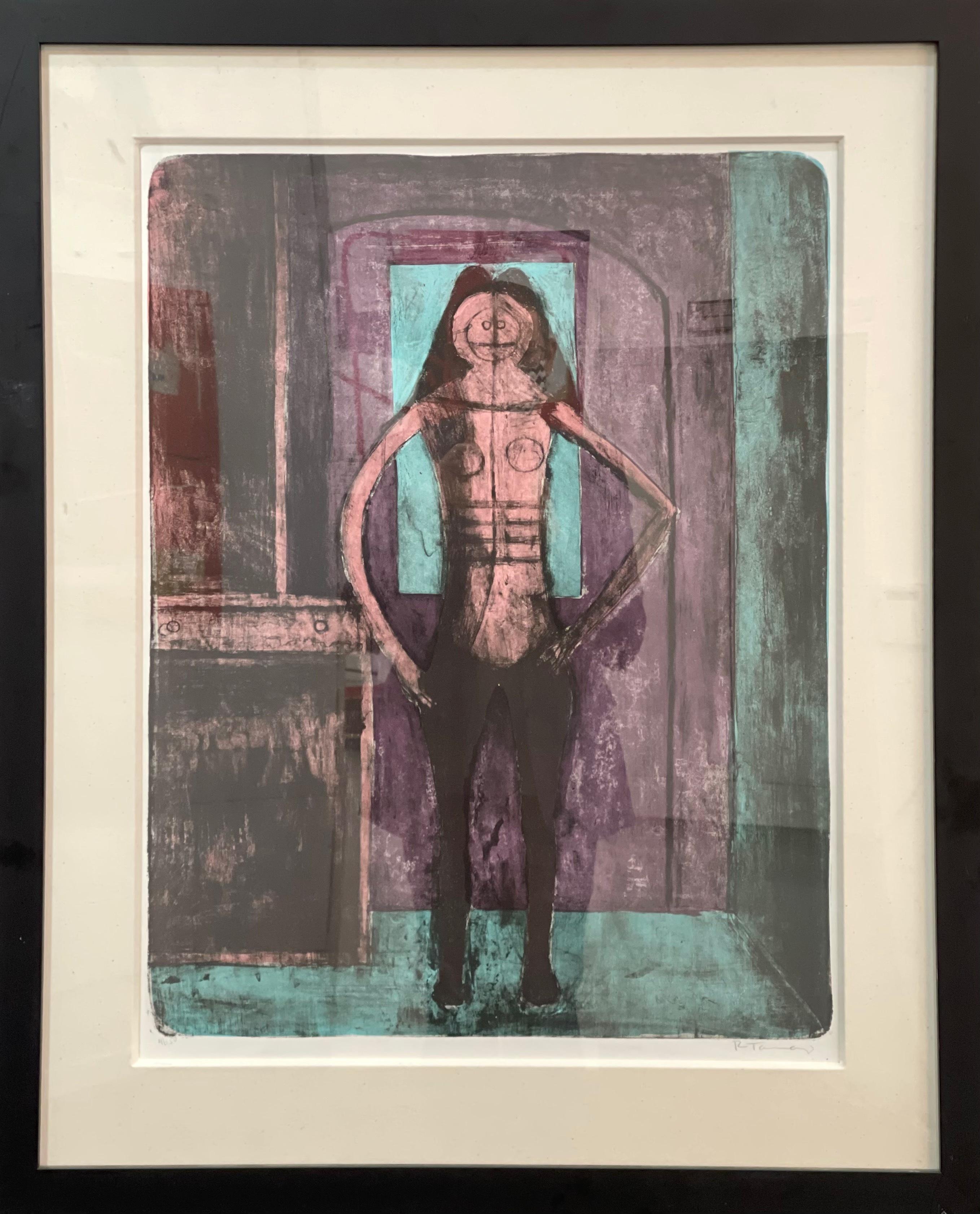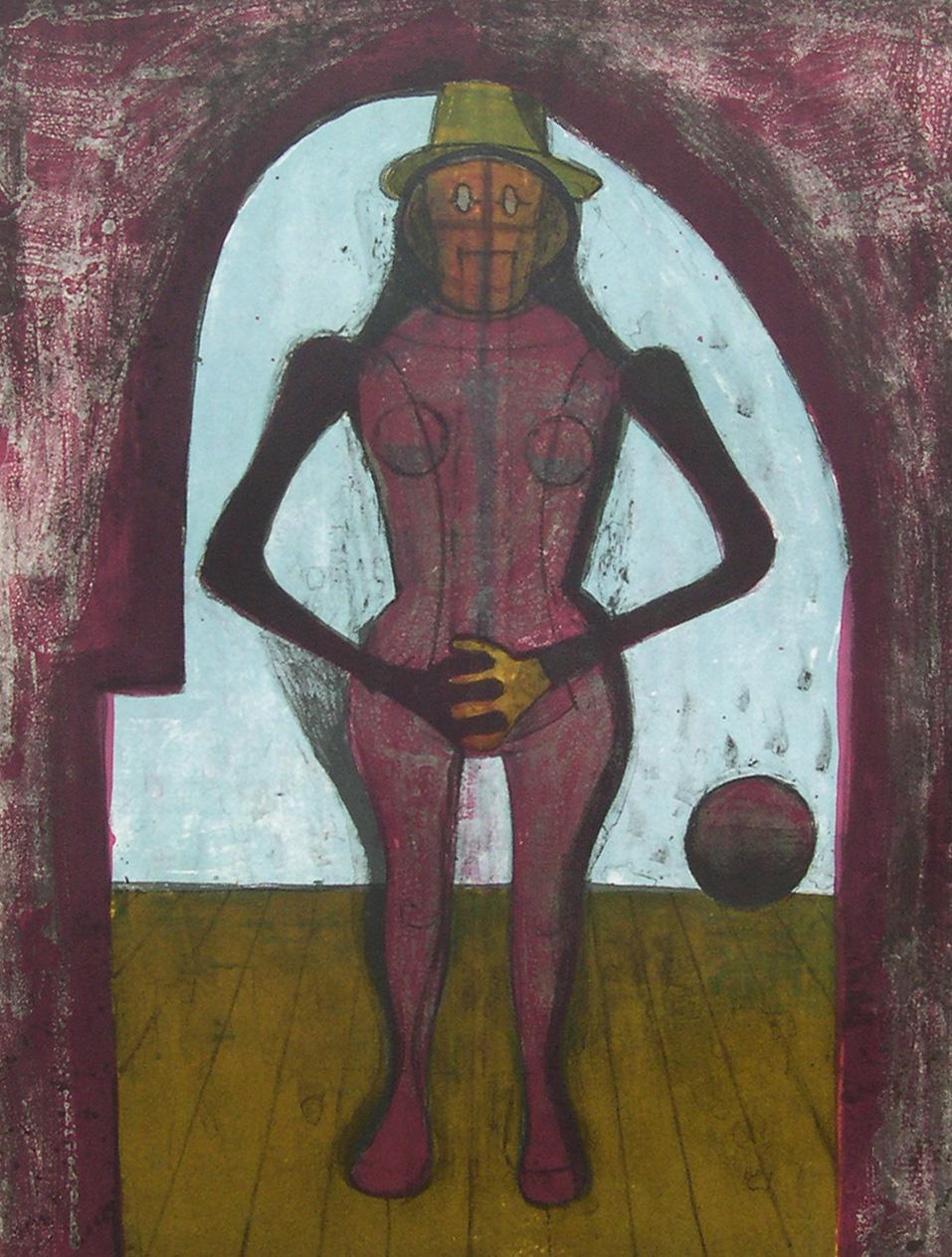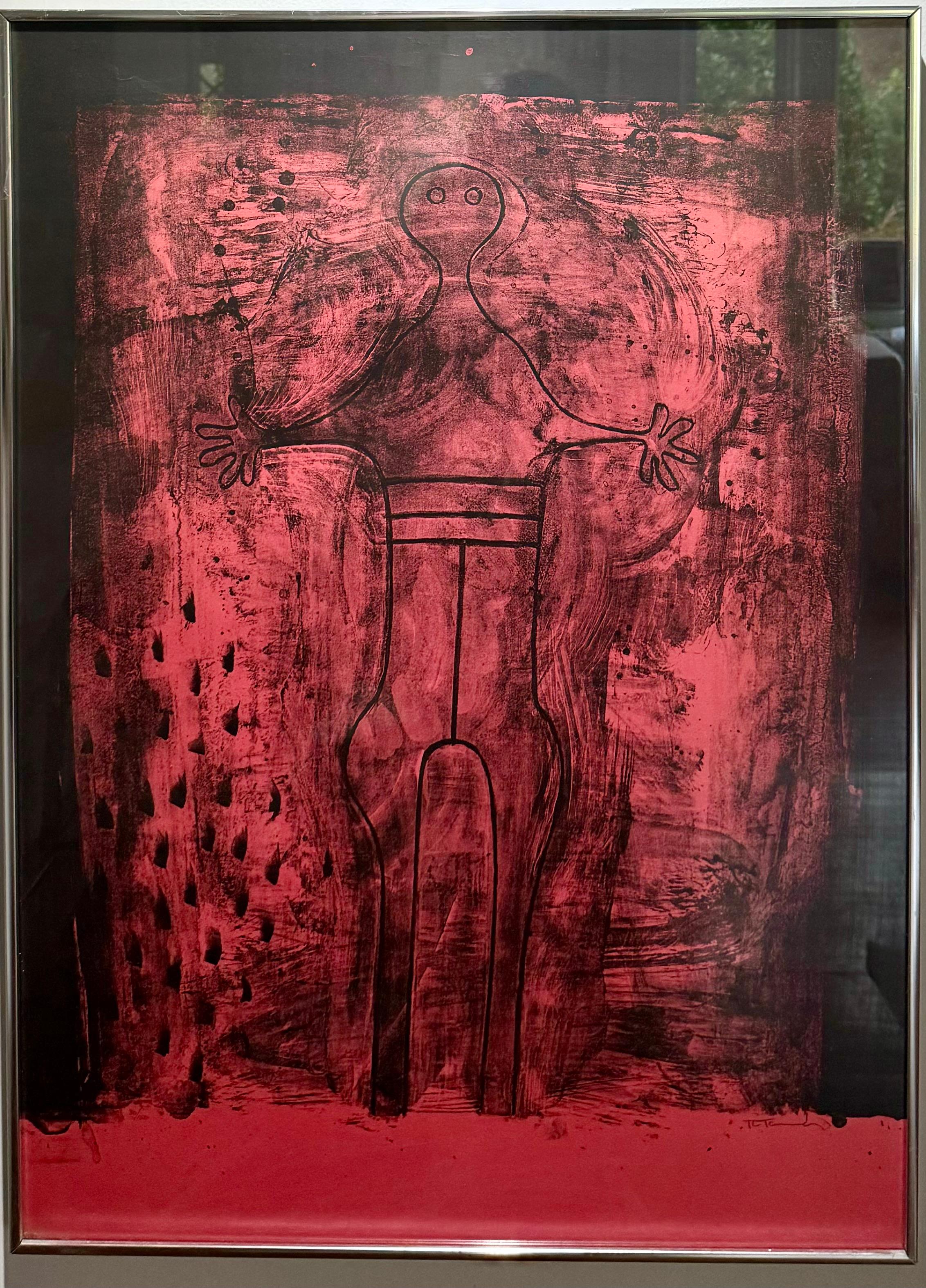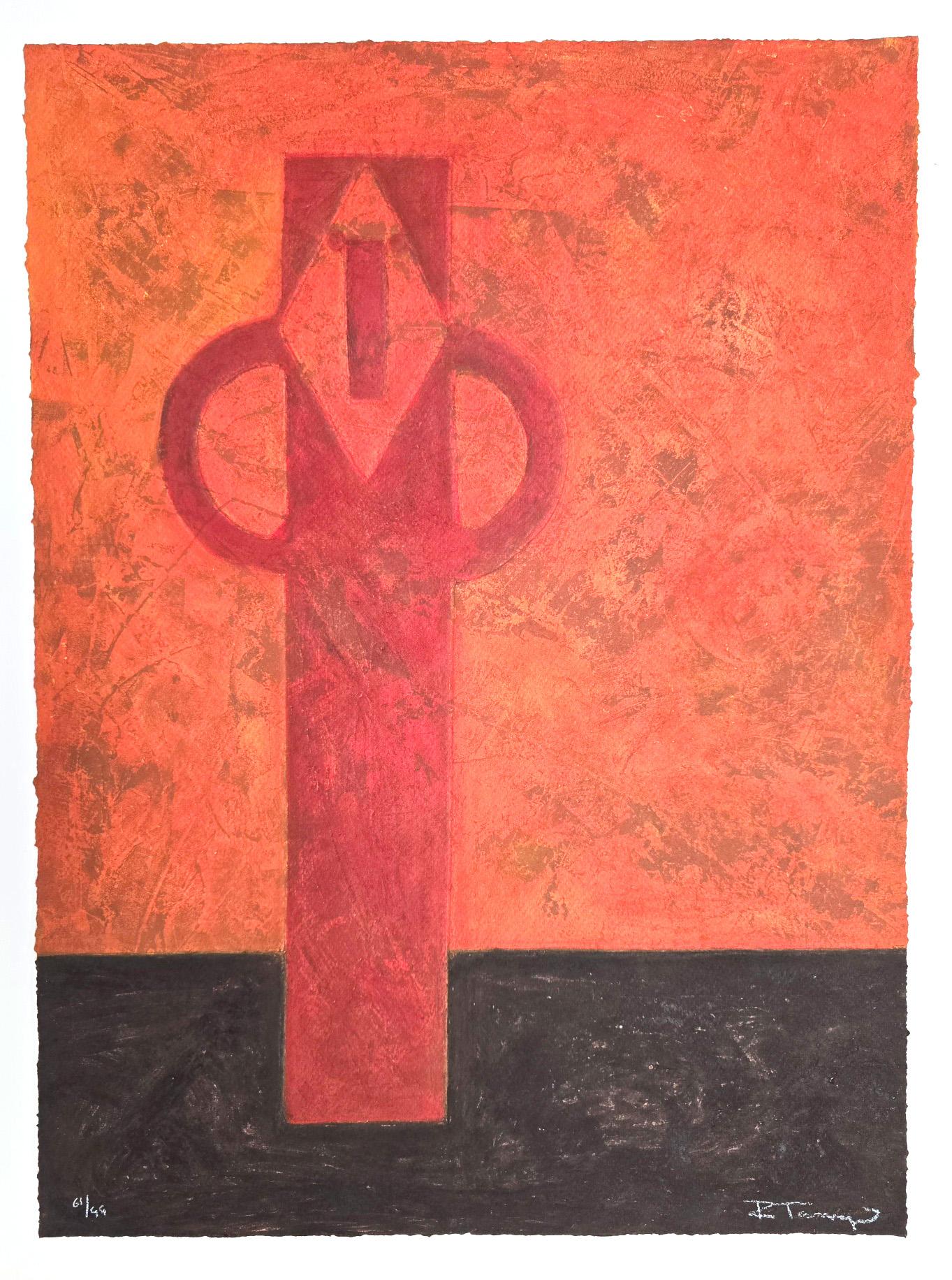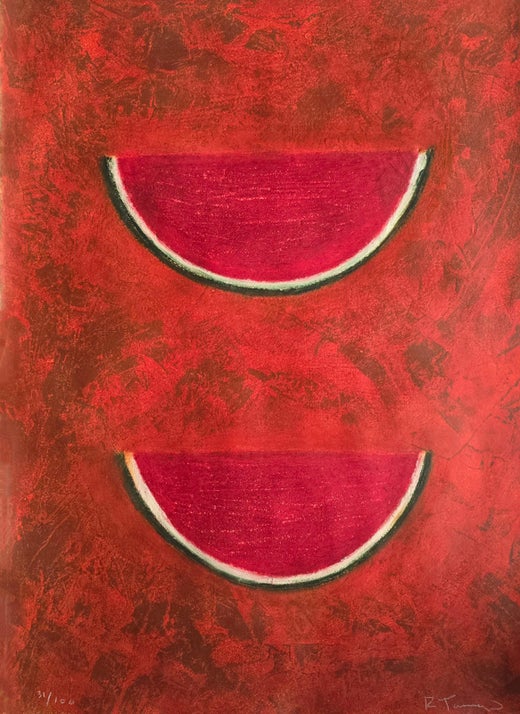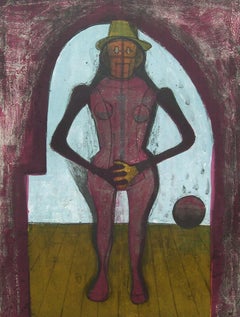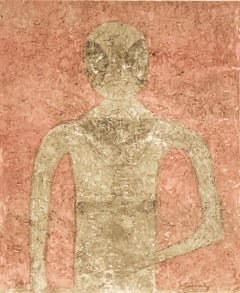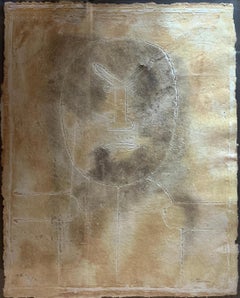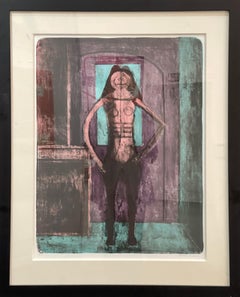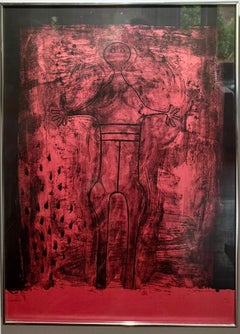Items Similar to "Venus Noire", Rufino Tamayo, Figurative Abstraction, Etching, 30x22 in.
Want more images or videos?
Request additional images or videos from the seller
1 of 9
Rufino Tamayo"Venus Noire", Rufino Tamayo, Figurative Abstraction, Etching, 30x22 in.1969
1969
$4,850
£3,736.79
€4,268.58
CA$6,943.62
A$7,573.42
CHF 3,982.03
MX$90,884.35
NOK 50,277.50
SEK 46,895.20
DKK 31,880.03
About the Item
"Venus Noire" by Rufino Tamayo is a Figurative Abstraction lithograph limited edition measuring 30x22 in. The piece is framed beautifully with a white mat in a gold and black frame under glass. Rufino Tamayo "Veus Noire" is an etching made in 1968. It is signed by the artist is the lower right, and numbered in the lower left as HC aside from the edition of 150. An abstract figure in black proudly stands in a square of yellow, pink, and red.
Rufino Tamayo (1899-1991) is a modern master whose legacy is rooted in his contributions across a variety of media, including mural and easel painting, drawing, and the graphic arts. Produced between 1925 and 1991, his graphic work includes woodcuts, lithographs, etchings and Mixografia® prints — a new technique that was developed in the early 1970s to allow him to produce his prints in relief.
- Creator:Rufino Tamayo (1899-1991, Mexican)
- Creation Year:1969
- Dimensions:Height: 30 in (76.2 cm)Width: 22 in (55.88 cm)Depth: 1 in (2.54 cm)
- More Editions & Sizes:30x22 in.Price: $4,850
- Medium:
- Movement & Style:
- Period:
- Framing:Frame IncludedFraming Options Available
- Condition:
- Gallery Location:Dallas, TX
- Reference Number:1stDibs: LU130126662102
Rufino Tamayo
Rufino Tamayo was born in Oaxaca, Mexico, in 1899 to parents Manuel Arellanes and Florentina Tamayo. Tamayo was active in the mid-20th century in Mexico and New York, painting figurative abstraction with surrealist influences. Although Tamayo studied drawing at the Academy of Art at San Carlos as a young adult, he became dissatisfied and eventually decided to study on his own.
About the Seller
4.7
Vetted Professional Seller
Every seller passes strict standards for authenticity and reliability
Established in 1967
1stDibs seller since 2019
24 sales on 1stDibs
Typical response time: 4 hours
- ShippingRetrieving quote...Shipping from: Dallas, TX
- Return Policy
More From This Seller
View All"Femme Au Collant Rose", Rufino Tamayo, Figurative Abstraction, Etching, 30x22
By Rufino Tamayo
Located in Dallas, TX
"Femme Au Collant Rose" by Rufino Tamayo is a Figurative Abstraction lithograph limited edition measuring 30x22 in. The piece is framed beautifully with a white mat in a gold and bla...
Category
1960s Abstract Expressionist Figurative Prints
Materials
Etching
"Hombre Blanco", Rufino Tamayo, Figurative Abstraction, Lithograph, 30x22 in.
By Rufino Tamayo
Located in Dallas, TX
"Hombre Blanco" by Rufino Tamayo is a Figurative Abstraction mixografia in color limited edition measuring 30x22 in. The piece is framed beautifully with...
Category
1970s Abstract Expressionist Figurative Prints
Materials
Etching
"Cabeza en Gris", Rufino Tamayo, Figurative Abstraction, Lithograph, 30x22 in.
By Rufino Tamayo
Located in Dallas, TX
"Cabeza en Gris" by Rufino Tamayo is a Figurative Abstraction lithograph limited edition measuring 30x22 in. The piece is framed beautifully with a white mat with a silver liner and ...
Category
1970s Abstract Expressionist Figurative Prints
Materials
Etching
"Torso", Rufino Tamayo, Figurative Abstraction, Mixographia, 34X26 in.
By Rufino Tamayo
Located in Dallas, TX
"Torso" by Rufino Tamayo is a Figurative Abstraction Mixographia limited edition measuring 34X26 in. The piece is mounted onto a piece of black board and floated between two pieces o...
Category
1970s Abstract Expressionist Figurative Prints
Materials
Etching, Mixed Media
"Manos en Rojo", Rufino Tamayo, Red Hands, Abstraction, Etching, 22x30 in.
By Rufino Tamayo
Located in Dallas, TX
"Manos en Rojo" by Rufino Tamayo is a Figurative Abstraction lithograph limited edition measuring 22x30 in. The piece is framed beautifully with a white mat in a silver and black fr...
Category
1970s Abstract Expressionist Figurative Prints
Materials
Etching
"Dos Figuras en Ochre", Rufino Tamayo, Figurative Abstraction, Etching, 22x24 in
By Rufino Tamayo
Located in Dallas, TX
"Dos Figuras en Ochre" by Rufino Tamayo is a Figurative Abstraction Mixographia limited edition measuring 22x24 in. The piece is framed beautifully with a white matt and gold frame ....
Category
1990s Abstract Expressionist Figurative Prints
Materials
Etching
You May Also Like
Femme au Collant Noir, 1969, (4/150)
By Rufino Tamayo
Located in San Francisco, CA
Rufino Tamayo
Femme au Collant Noir, 1969
Color lithograph
Unframed dimensions: 27.50 x 21 in
Framed dimensions: 37.625 x 30.75
Edition 4/150
This limited edition color lithograph i...
Category
1960s Abstract Portrait Prints
Materials
Color, Lithograph
Venus Noir
By Rufino Tamayo
Located in San Francisco, CA
This artwork titled "venus Noir" from the suite "The Mujeres File" 1969 is an original colors lithograph on BFK Rives paper by renown Mexican artist Rufino Tamayo, 1899-1991. It is h...
Category
Mid-20th Century Modern Figurative Prints
Materials
Lithograph
Original Lithograph PENCIL SIGNED Ed. 30/150 Affiche avant la lettre LAS MUJERAS
By Rufino Tamayo
Located in New York, NY
Here we have an Original Pencil Signed and Numbered Lithograph by Rufino Tamayo, famous Mexican American Artist…. known for abstract Figurative Expressionist images
There was only a...
Category
1960s Abstract Expressionist Abstract Prints
Materials
Lithograph
La Negra (The Black Woman)
By Rufino Tamayo
Located in San Francisco, CA
This artwork titled "La Negra (The Black Woman)" from the suite "The Mujeres File" 1969 is an original colors lithograph on B.F.K. Rives paper by renown Mexican artist Rufino Tamayo, 1899-1991. It is hand signed and numbered 150/150 in pencil by the artist. The image size is 26.85 x 21.25 inches, sheet size is 29.5 x 22.15 inches, framed size is 42 x 35 inches. Published by Touchtone Publisher, New York, printed by Ateliers Desjobert, Paris. Referenced and pictured in the artist's catalogue raisonne by Pereda, plate #109 page 107. Custom framed in a wooden silver frame, with silver spacer and fabric matting. It is in excellent condition.
About the artist:
A native of Oaxaca in Southern Mexico, Rufino Tamayo's father was a shoemaker, and his mother a seamstress. Some accounts state that he was descended from Zapotec Indians, but he was actually 'mestizo' - of mixed indigenous/European ancestry. (Santa Barbara Museum of Art). He began painting at age 11. Orphaned at the age of 12, Tamayo moved to Mexico City, where he was raised by his maternal aunt who owned a wholesale fruit business.
In 1917, he entered the San Carlos Academy of Fine Arts, but left soon after to pursue independent study. Four years later, Tamayo was appointed the head designer of the department of ethnographic drawings at the National Museum of Archaeology in Mexico City. There he was surrounded by pre-Colombian objects, an aesthetic inspiration that would play a pivotal role in his life. In his own work, Tamayo integrated the forms and tones of pre-Columbian ceramics into his early still lives and portraits of Mexican men and women.
In the early 1920s he also taught art classes in Mexico City's public schools. Despite his involvement in Mexican history, he did not subscribe to the idea of art as nationalistic propaganda. Modern Mexican art at that time was dominated by 'The Three Great Ones' : Diego Rivera, Jose Clemente Orozco, and David Alfaro Siqueros, but Tamayo began to be noted as someone 'new' and different' for his blending of the aesthetics of post Revolutionary Mexico with the vanguard artists of Europe and the United States.
After the Mexican Revolution, he focused on creating his own identity in his work, expressing what he thought was the traditional Mexico, and refusing to follow the political trends of his contemporary artists. This caused some to see him as a 'traitor' to the political cause, and he felt it difficult to freely express himself in his art. As a result, he decided to leave Mexico in 1926 and move to New York, along with his friend, the composer Carlos Chavez. The first exhibition of Tamayo's work in the United States was held at the Weyhe Gallery, New York, in that same year. The show was successful, and Tamayo was praised for his 'authentic' status as a Mexican of 'indigenous heritage', and for his internationally appealing Modernist aesthetic. (Santa Barbara Museum of Art).
Throughout the late thirties and early forties New York's Valentine Gallery gave him shows. For nine years, beginning in 1938, he taught at the Dalton School in New York.
In 1929, some health problems led him to return to Mexico for treatment. While there he took a series of teaching jobs. During this period he became romantically involved with the artist Maria Izquierdo...
Category
Mid-20th Century Modern Figurative Prints
Materials
Lithograph
Figura Hieratica, Surrealist Etching by Rufino Tamayo
By Rufino Tamayo
Located in Long Island City, NY
Portfolio: Rufino Tamayo 15 aguafuertes 1979
Date: 1979
Etching, signed and numbered in pencil
Edition of 61/99
Image Size: 28 x 20 inches
Size: 30 x 22 in. (76.2 x 55.88 cm)
Printer...
Category
1970s Surrealist Landscape Prints
Materials
Etching
Affiche avant Lettre (Mujer Suite), 1969 Lithograph by Rufino Tamayo
By Rufino Tamayo
Located in Long Island City, NY
Affiche avant Lettre (Mujer Suite)
Rufino Tamayo
Mexican (1899–1991)
Date: 1969
Lithograph Poster, signed in the plate
Size: 32.5 x 24 in. (82.55 x 60.96 cm)
Category
1960s Prints and Multiples
Materials
Lithograph
More Ways To Browse
Salvador Dali The Lovers
Salvador Dali The Ship Of Souls
Salvador Dali Tree Of Knowledge
Sarah Slappey
Shag Josh Agle
Shepard Fairey Guns
Shield Of Achilles
Shigeki Kuroda
Simbari Sylvie
Sol Y Dali
Steffen Thomas
Steinberg Galerie Maeght Poster
Susan Rios Print
Swatch Keith Haring
Tan Tan Bo
Tarkay Serigraphs Signed
Tarot Card Box
Thank You For The Wonderful Destiny
